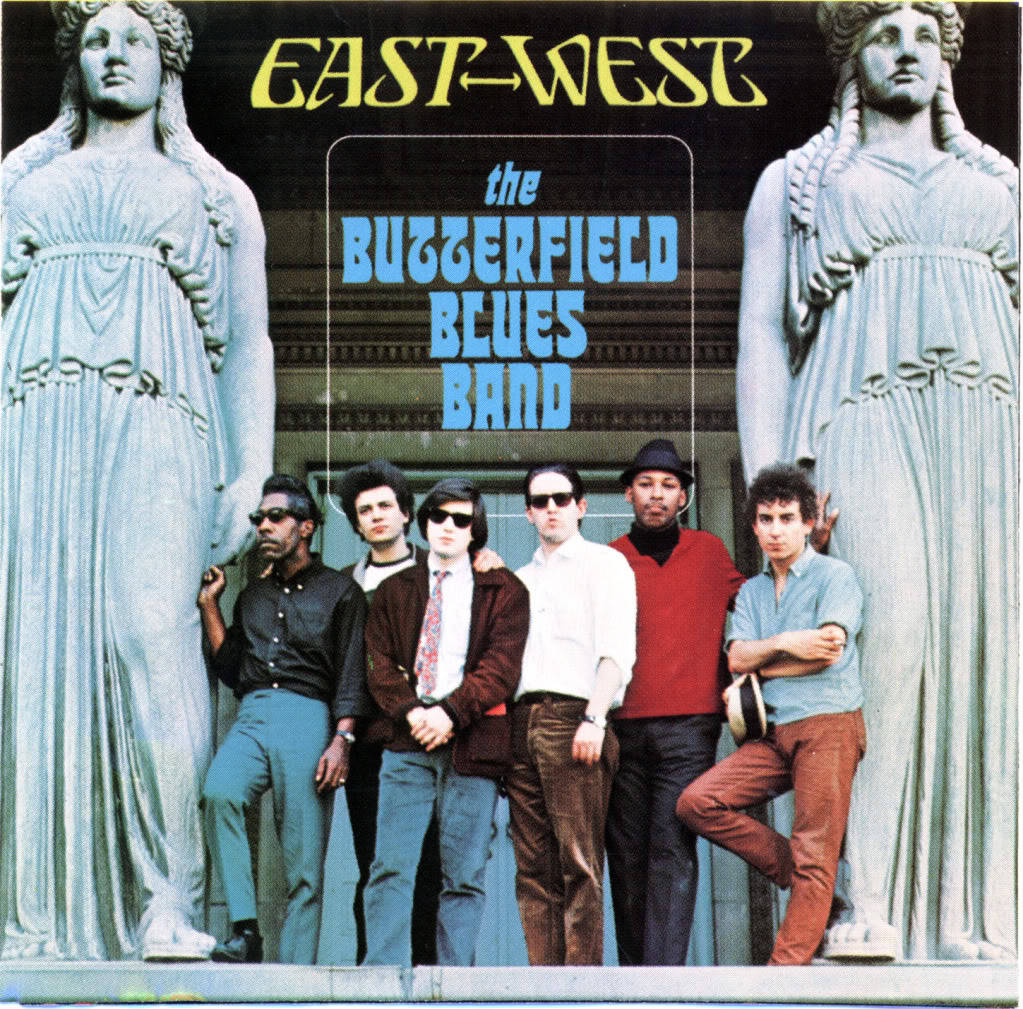The band achieved some level of notoriety when Bloomfield, Lay and Arnold accompanied Bob Dylan when he went 'electric' and horrified the folk purists at the 1965 Newport Folk Festival. After recruiting singer-songwriter Nick Gravenites, the band then recorded their first studio album, 'The Paul Butterfield Blues Band'.
Lay left the band due to illness and was replaced on drums by Billy Davenport before they commenced work recording their follow-up album in July 1966. For these sessions they would also be augmented by keyboard player Mark Naftalin.
The sessions took place at the famous Chess Studios sited at 2120 South Michigan Avenue, Chicago and the resulting album 'East-West' has become one of the most influential albums of the period. Strange you might think for an album that consisted mainly of blues covers, however well played they may be. What set 'East-West' apart however, were two tracks in which they extended themselves well beyond the parameters normally associated with the blues.

Side one of the album begins with:
'Walkin' Blues'
Like John Mayall's Blues Breakers and many other blues bands at that time, Butterfield was using songs that had been reissued in 1961, twenty three years after the death of their creator, Robert Johnson. This plodding blues number has been recorded by numerous artists over the year and this version is nothing particularly special but it does allow Butterfield to produce some good harmonica licks.
'Get Out Of My Life Woman'
Written by New Orleans musician Allen Toussaint, this song was more a vehicle for the piano work of Mark Naftalin but also features nice guitar fills from Bloomfield.
'I Got A Mind To Give Up Living'
This slow burning blues classic features some great guitar work. Butterfield sings words which I believe were written by BB King, 'I've got a mind to give up living, and go shopping instead.'
Wow, things must be bad!
'All These Blues'
Another traditional blues song which serves as a vehicle for some great harmonica work from Butterfield.
'Work Song'
Now we come to the first of the two songs which really make this album something special. Nat Adderley's instrumental is extended to an eight minute jam featuring more great harmonica from Butterfield, superb guitar solos from Bloomfield and even Bishop and Naftalin take solos. For the first time there are indications that this is more than your average blues/rock album as jazz influences begin to emerge. It may sound 'old hat' now but one must remember that this was before extended jams became commonplace thanks to the likes of Cream.
Side two of the albums commences with a Mike Nesmith composition.
'Mary Mary'
While Butterfield and colleagues were recording this song in Chicago in July 1966, composer Mike Nesmith was recording a version in Western Recorders, Hollywood with The Monkees. His version would be issued the following year on 'More Of The Monkees'.
'Two Trains Running'
Recording in Chess Studios the band obviously feel the influence of Muddy Waters. While the album opener was one of the first blues songs Waters learned to play, this song is one of his own compositions. A great band performance but the highlight is the Mike Bloomfield's guitar solo.
'Never Say No'
The shortest song on the album is a very slow traditional blues with lead vocals from Elvin Bishop. This leads into the longest track on the album.
'East-West'
According to Mark Naftalin, Mike Bloomfield was inspired to write this piece after experiencing an all night LSD trip. Whatever the drug influences, the musical influences are clearly based in the recent work of Miles Davis and John Coltrane where the music developed modally through scales rather than through chord progressions. Based upon a bass line from a Nick Gravenites song ('It's About Time'), Bloomfield developed the music in a way that no other blues band were doing at that time. It was more akin to Indian music built upon a drone rather than American blues.
The song had been developed over a period of several months prior to these recording sessions. It was certainly played live at the Whisky A Go Go in Hollywood in the winter of 1966 (probably January). Even by then it was pretty much fully formed and ran to a full 13 minutes. Opening deceptively as a blues/rock piece featuring Bloomfield on guitar and eventually Butterfield on harmonica, it builds to a crescendo before almost stopping abruptly. It then becomes something completely different as Bloomfield's guitar takes the casual blues listener to someplace they have never been before. The influence here is clearly eastern making the title 'East-West' wholly appropriate. Once more this section builds to a climax and is then followed by a more melodic part. Eventually this also builds and finally ends in a crashing conclusion, a flurry of notes and chords and Butterfield having the final say.
The impact of this music upon the general blues/pop fan at this time was cataclysmic. This was quite simply like nothing else that existed on record outside of jazz. Without any shadow of doubt it paved the way for bands like The Grateful Dead, Cream and Quicksilver Messenger Service to develop extended, improvised pieces both live and on their own subsequent recordings. For this reason alone it thoroughly deserves its place as one of the most influential albums of not only this period, but of all time.
No comments:
Post a Comment